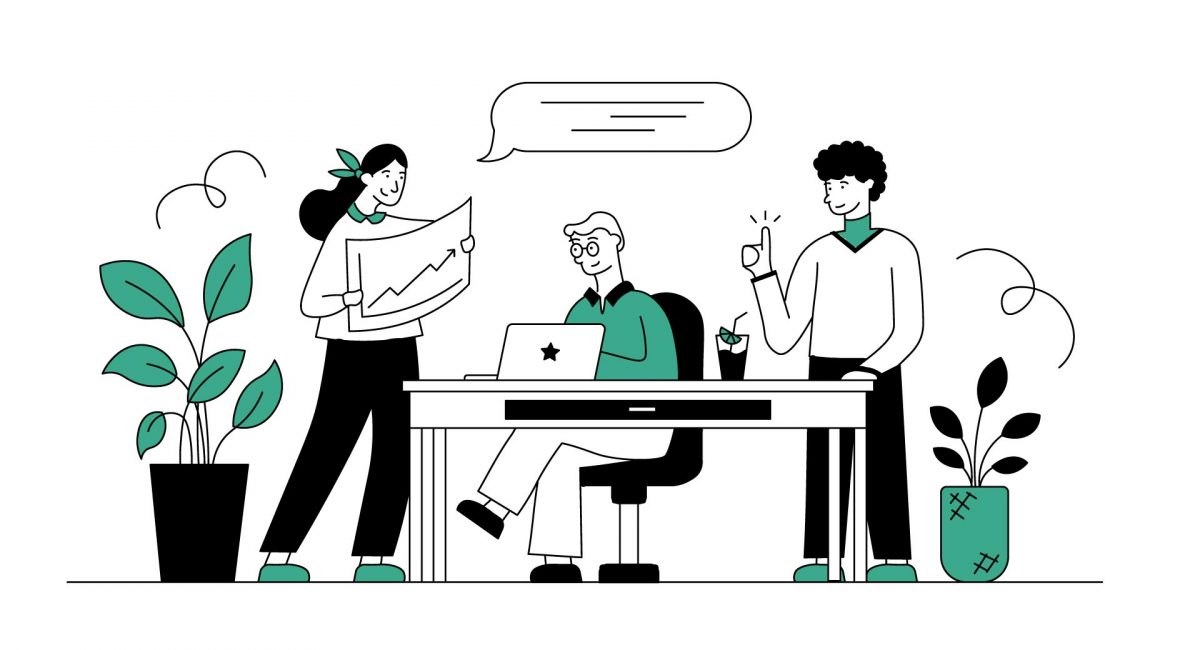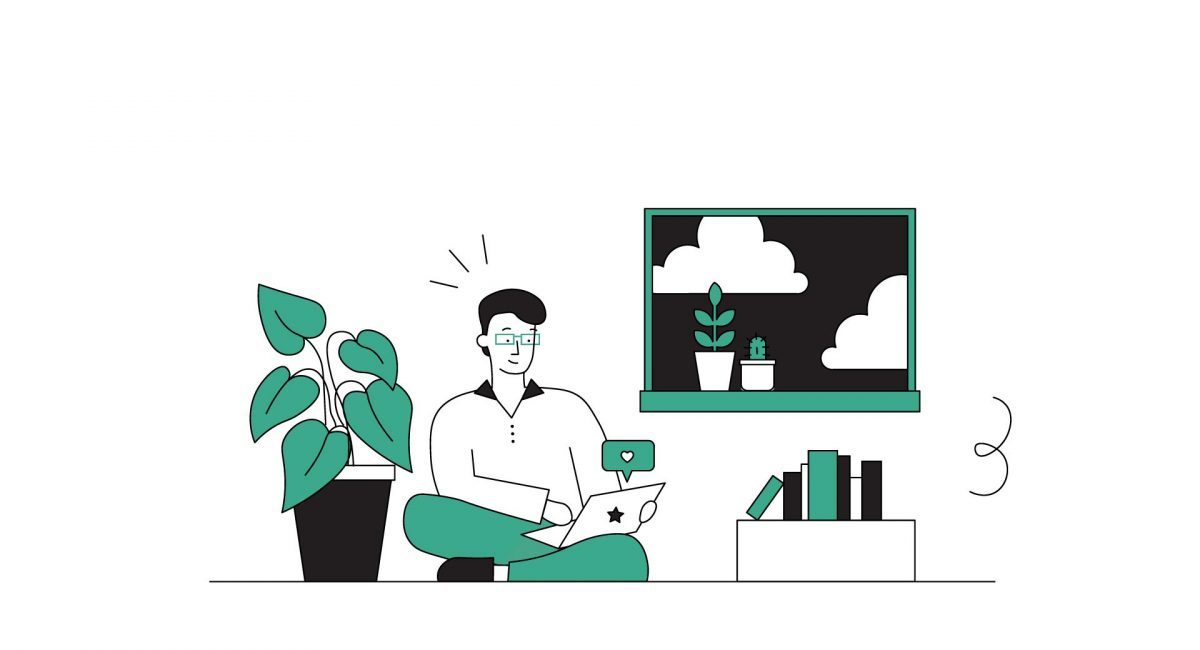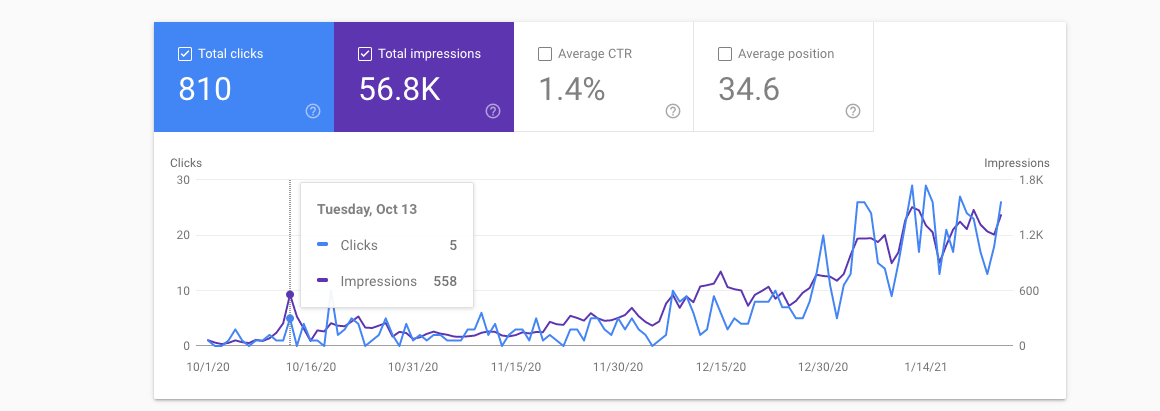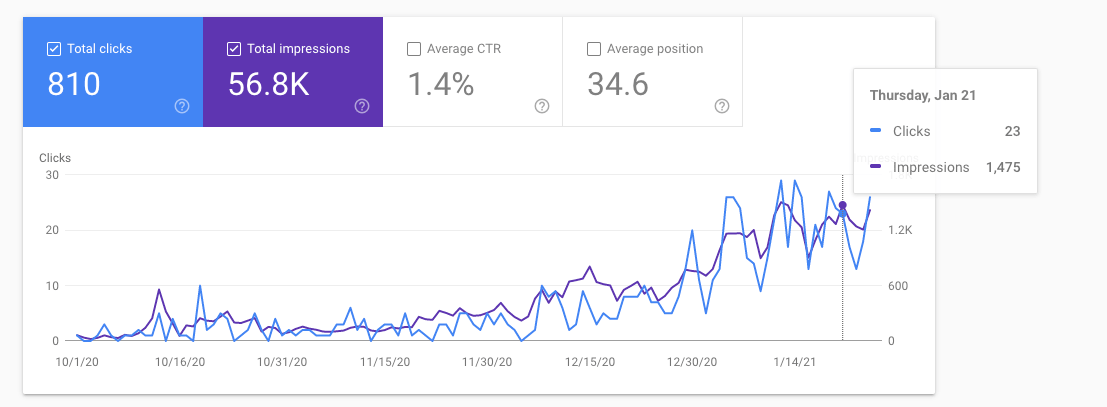Why content marketing beats social media advertising
I was convinced after running a single Facebook ad campaign that social media advertising was money-in, results-out every time. I didn’t realize that content marketing is slower but a much more reliable avenue for growth.

By Ryan Carruthers
February 13, 2021
Table of contents
- Freelance web design for small business clients
- Learning how to drive traffic using Facebook ads
- Traffic dropping as soon as the ads stopped
- You can’t grow a business on the back of ads
- The downsides of relying on Facebook ads
- Becoming the content lead at Acadium
- Executing a content strategy
- Not relying on ads for growth
- The big question: should you be a content marketer or social media marketer?
Freelance web design for small business clients
When I first started pursuing digital marketing as a career, I thought the best way to help clients was redesigning their website. It’s the first impression potential customers have with them. Additionally, during a pandemic, customers aren’t going to stores anymore. It’s even more important to have a well-designed website.
I tested this hypothesis with Jim Taylor Custom Saddlery, a custom saddle manufacturer. Their website was basic and merely a place holder with a contact form. It failed to represent their brand as high quality and luxurious. So I redesigned their website and tried to create an image online that would entice people to pick up the phone and call Jim.
Redesigning the website was only the first step. It was encouraging to hear Jim and his team comment on the improvement of the website’s aesthetics. But I wasn’t hearing that it was translating into sales. At the time, I didn’t know anything about sales funnels or landing pages. I primarily focused on the look and feel of the site.
“If you can learn how to run ads on Facebook or Google (which you can), then you’re immediately an asset to someone who needs quick traffic to their site.”

All illustrations were done by Katie Jones. See her work here.
Learning how to drive traffic using Facebook ads
So the website was looking good, but it had no traffic. The solution? Facebook ads. I learned how to use Facebook ads while working with a mentor I found on Acadium’s platform. I convinced Jim to give me a budget to test out if Facebook ads could grow his business.
It turns out Facebook ads work.
If you can learn how to run ads on Facebook or Google (which you can), then you’re immediately an asset to someone who needs traffic to their site quickly. I started running ads using some product imagery of the saddles and clips of some video content they were producing at the time.
Immediately, I was able to report to Jim a dramatic uptick in web traffic. Jim shared my excitement because he started receiving several calls a day from potential customers.
The campaigns were such a success I felt like Facebook ads were the answer to every business’s struggles. All you needed was the budget to run ads.
The campaigns had generated so much interest we had to turn off the ads so Jim could meet his demand.
Seeing traffic drop as soon as the ads stopped
What happened after I turned off the Facebook ads shouldn’t have surprised me, but it did at the time. After I stopped running Facebook ads to drive traffic to Jim’s site, the traffic dropped back to what it was before the website redesign. I was shocked. I thought that the brand awareness the ads generated would sustain increased traffic to the site even after turning them off. That wasn’t the case.

You can’t grow a business on the back of ads
Seeing the traffic drop didn’t upend my belief that ads were the answer to every business’s problem. It was like I learned how to use a hammer and confronted every problem like it was a nail. I was naive. I went to Jim and made the case that if he wanted to continue growing his business, he would have to continue buying ads.
In hindsight, I realized that paid ads were just one way to grow a business. Facebook ads aren’t a strategy but a channel.
I was convinced after running a single campaign that social media advertising was a money-in, results-out scheme.
“I learned that to help a business grow, Facebook ads couldn’t be the only tool I used.”
The downsides of relying on Facebook ads
What I failed to realize was that these advertising platforms change.
- Advertising cost increase as more people run ads.
- It’s easy to be outspent by a competitor. Jim isn’t the only business in his niche, and he isn’t the biggest. He could easily be outspent by a competitor on Facebook with a bigger budget.
- Ad fatigue is when your target audience sees the same ads so much that they become blind to them or, worse, annoyed by them. If you’re running ads constantly, your target market will get sick of seeing them.
- You can’t stop paying for traffic. Once you stop pumping money into your campaigns, the traffic will drop because it’s the only channel you’re investing in.
I learned that to help a business grow, Facebook ads couldn’t be the only tool I used.

Becoming the content lead at Acadium
After my apprenticeship on Acadium, they invited me to share my experience on their podcast. Because I was so enthusiastic about the results that running ads can bring to businesses, they hired me as a contractor to experiment with newer ad platforms like Quora, Snapchat and TikTok.
The experiments were to see if they could reliably bring in users to their platform. Although it was interesting to push out content on those platforms, they weren’t reliable channels for growth. I was beginning to learn that putting money behind content wouldn’t guarantee results.
We decided to drop the experimental ads and explore publishing organically instead. My role then transitioned to executing their content strategy.
Managing their blog was my introduction to content marketing. I couldn’t put money behind my efforts to generate results anymore but would, instead, earn the results by publishing engaging content.
Executing a content strategy
When I was running ads, I knew that people would see my content whether they wanted to or not, but now I had to earn their attention. If writing compelling content wasn’t challenging enough, I also had to optimize my content for search engines, which was an abstract and technical skill to me at the time.

Building reliable growth through content marketing and SEO
I published three articles a week on their blog around topics related to their audience. I quickly learned about keyword research, using Yoast SEO to optimize my content and a myriad of other SEO best practices. The frequency of publishing was a good teacher. I also had a great editor, Sydney, who gently called me out when my writing wasn’t up to par or made no sense at all (which was quite a bit early on).
Through trial and error and relentlessly publishing three times a week, we slowly started to see the results of our efforts.
Content marketing is hard to measure. I wanted to know within hours of publishing a blog post the results it was generating. I expected to see immediate results the same way I did when running Facebook ads to Jim’s website.
Over the quarter, we slowly started to see an uptick in the amount of traffic and impressions the blog was generating.


After four months, the blog impressions tripled, and the traffic rose with it. The realization that I could help a business grow by putting out content consistently and optimizing it was a light bulb moment.
Content marketing is also free. We didn’t have to pay to have people see our content. We could share the posts on LinkedIn or Twitter, enter conversations in Slack communities, or include the link in Reddit or Quora answers. We could also turn each article into a podcast or video to live on YouTube.
Content marketing is slower but a much more reliable avenue for growth.
“Unlike paid advertising, the results from organic content can compound over time.”
Not relying on ads for growth
The realization of content marketing’s potential came at an opportune time. Acadium decided to move away from paid advertising and double down on more reliable growth opportunities. Unlike paid advertising, the results from organic content can compound over time.
As an article continues to rank higher in the search results, it will attract more visitors, more shares, and more sign-ups to their platform. Although it takes longer and more consistent effort, the results are worth it.
The big question: should you be a content marketer or social media marketer?
This post argues the strength of content marketing over paid advertising, but both have their place within the digital marketing industry. Content marketing and PPC advertising also aren’t mutually exclusive. They can work together. When you first publish a piece of content, you can put some money into promoting it on Facebook to get an initial bump in traffic. I’m arguing that only using paid advertising has diminishing returns, whereas content marketing’s results compound.
As a freelance marketer, it’s helpful to be familiar with both channels and use them when appropriate. If you’re looking for a quick turn around and fast results for your clients, paid advertising makes sense. But if your contract with a client is longer than just one project, consider proposing a content marketing strategy. You’ll be able to work with them for longer and set them up for future success, not just short term results.
The choice is up to you.